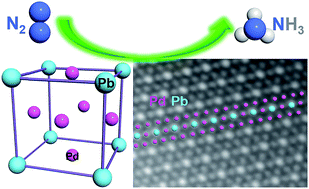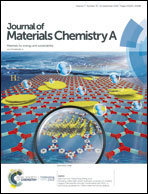Tunable synthesis of multiply twinned intermetallic Pd3Pb nanowire networks toward efficient N2 to NH3 conversion†
Abstract
Atomically ordered intermetallic nanocrystals have been extensively explored in electrocatalysis due to their outstanding catalytic performances and excellent stabilities. However, controllable synthesis of intermetallic nanocrystals in terms of their size and structure remains a grand challenge due to the generally involved high-temperature thermal annealing synthetic method, largely hindering the optimization of their catalytic properties. Herein, we report a versatile approach to the synthesis of atomically ordered Pd3Pb multiply twinned intermetallic nanowire networks (MT-IM-NNs) with a tunable diameter and microstructure. The use of preformed Pd seeds, which were converted to a Pd3Pb intermetallic phase via the diffusion of Pb atoms into the seeds, as well as an oriented attachment growth mode, accounted for the formation of such a unique structure. Importantly, the diameter and microstructure of Pd3Pb MT-IM-NNs could be engineered by controlling the size and type of Pd seeds. In addition, the Pd3Pb multiply twinned intermetallic porous nanowire networks exhibited a high faradaic efficiency of 21.46% and an NH3 yield rate of 18.2 μg h−1 mgcat−1 at −0.2 V vs. the reversible hydrogen electrode toward N2 electroreduction.



 Please wait while we load your content...
Please wait while we load your content...